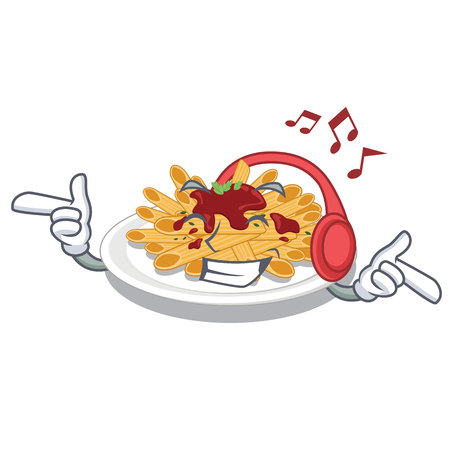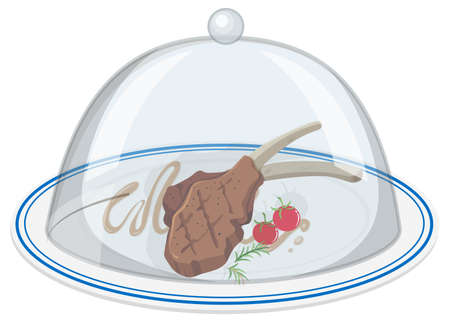Gathering Your Surf and Turf Essentials
Before you can get grilling, it’s all about choosing the right ingredients for a true American campfire surf and turf. Start with the classics: thick-cut ribeye steaks or New York strips bring bold flavor and hold up well over the flames. For the “surf,” wild-caught shrimp, scallops, or even lobster tails are favorites—just make sure they’re fresh and kept chilled until you’re ready to cook. When shopping, look for meats that are well-marbled and seafood that smells clean, not fishy. Don’t forget your must-have spices: kosher salt, cracked black pepper, smoked paprika, garlic powder, and maybe a dash of Old Bay for that coastal vibe. Bring along olive oil or melted butter for basting—these help lock in moisture and add richness. Pack some sturdy skewers or a grill basket to keep smaller seafood from slipping through the grates. With these essentials in your cooler and backpack, you’re set for a campfire meal that brings together the best of land and sea.
2. Campfire Setup and Safety Tips
Before you can enjoy grilling steak and seafood in the great outdoors, it’s essential to set up a safe and effective campfire. American campers know that a well-built fire is the heart of any “surf and turf” adventure, but safety always comes first. Here’s how to create the perfect grilling campfire while protecting both yourself and nature.
Choosing Your Campfire Spot
Always select a designated fire ring or pit if your campsite provides one—this is standard at many U.S. campgrounds. If you’re in a more primitive area, look for a flat, clear patch of ground away from overhanging branches, dry grass, or brush. Keep your campfire at least 15 feet from tents, chairs, and other gear.
Essential Gear for American Campers
| Gear | Purpose | Recommended Brands/Types |
|---|---|---|
| Campfire Grill Grate | Provides a stable surface for cooking steak and seafood directly over flames or coals | Coleman, Texsport Heavy Duty Over Fire Camp Grill |
| Fire Starter Kit | Makes lighting your fire quick and reliable even in damp conditions | BIC Lighters, Zippo Emergency Fire Kit, UCO Stormproof Matches |
| Heat-Resistant Gloves | Protects hands when handling hot cookware or adjusting logs/grate | OZERO BBQ Gloves, Grill Armor Gloves |
| Long-Handled Tongs & Spatula | Keeps hands safely away from flames while flipping food | Cuisinart Grill Tools Set, OXO Good Grips Grilling Tools |
| Bucket of Water/Shovel | Essential for fire safety—quickly extinguish the fire and cover embers when done | N/A (any large water container or camp shovel) |
Building Your Campfire for Grilling
Aim for a strong bed of hot coals rather than big flames—this gives you steady heat control for both steak and delicate seafood. Start with a small teepee or log cabin structure using dry wood; once it burns down to glowing embers, spread them out evenly under your grill grate. Avoid using softwoods like pine or cedar as they can impart resinous flavors; seasoned oak or hickory are American favorites for grilling.
Fire Safety Reminders:
- Never leave your campfire unattended.
- Keep children and pets a safe distance away at all times.
- Extinguish your fire completely with water—stir ashes until they are cool to the touch before leaving the site.
- If local fire bans are in effect, use an approved propane grill instead.
A solid campfire setup not only ensures delicious surf and turf results but also keeps everyone safe so you can focus on making memories around the fire.

3. Prepping Steak and Seafood for the Grill
Getting your surf and turf ready for a campfire grill doesn’t have to be complicated—even if you’re out in the wild. With a bit of planning and some simple techniques, you can maximize flavor and keep prep easy. Here’s a step-by-step guide to marinating, seasoning, and prepping both steak and seafood at your campsite.
Step 1: Choose Your Proteins Wisely
Go for cuts of steak that cook quickly over high heat—think ribeye, sirloin, or strip steak. For seafood, firm fish like salmon or halibut are less likely to fall apart on the grill, and shellfish like shrimp or scallops are fast-cooking and easy to handle.
Step 2: Simple Marinades & Seasonings
If you want big flavor with minimal fuss, pack a basic marinade in a resealable bag before leaving home. A classic combo is olive oil, garlic, lemon juice, salt, pepper, and a dash of dried herbs (like thyme or oregano). For steak, consider adding a splash of soy sauce or Worcestershire for umami depth; for seafood, include some citrus zest or fresh dill if you have it.
Quick Marinating Tips:
- Steak: Marinate for at least 30 minutes up to overnight in your cooler.
- Seafood: Keep it to 15-30 minutes—any longer and the acid can “cook” the fish.
Step 3: Prepping at Camp
When you’re ready to cook, pat everything dry with paper towels—excess moisture leads to steaming instead of searing. Lightly oil both your proteins and your grill grate to prevent sticking.
Seasoning on the Fly:
- Bring small containers of salt, pepper, and your favorite dry rubs for last-minute flavor boosts.
- Lemon wedges add brightness to seafood after grilling.
Pro Tip:
If you’re short on time or gear, skip the marinade and just season generously before grilling—good meat and fresh seafood shine with just salt and fire.
4. Grilling Techniques for Steak and Seafood
If you want to impress your fellow campers with a classic surf and turf feast, mastering campfire grilling is key. Achieving that iconic sear on both steak and seafood isnt as intimidating as it sounds, especially when you have a few fundamental techniques under your belt. Here’s how to get the best flavor and texture, right over an open flame.
Timing: When to Put Steak and Seafood on the Grill
Both steak and seafood require careful timing, but they cook at very different rates. Steaks generally need more time than seafood, so plan accordingly. Use this quick reference table to help guide your grill session:
| Ingredient | Heat Level | Time per Side | Ready When… |
|---|---|---|---|
| Steak (1-inch thick) | High direct heat | 3-5 minutes | Internal temp 130-135°F (medium-rare) |
| Shrimp | Medium-high direct heat | 1-2 minutes | Pink & opaque, slight char |
| Salmon Fillet | Medium heat, indirect or on foil | 3-4 minutes | Flakes easily with fork, 145°F internal temp |
| Lobster Tail | Medium-high direct heat | 5-6 minutes | Meat is white & firm, shell is bright red |
Temperature: Managing Campfire Heat Like a Pro
The magic of a good campfire grill is all about zones. Build up a bed of hot coals for direct searing and keep some cooler areas for gentle cooking. Hold your hand about five inches above the grate: if you can only keep it there for 2 seconds, thats high heat; 4 seconds means medium heat. For steak, you want that initial sizzle—place it directly over the hottest part first to lock in juices and create those coveted grill marks.
Pro Tips:
- Let meat come to room temp before grilling.
- Oil your grate with tongs and a paper towel soaked in oil to prevent sticking.
- If your campfire gets too hot, move food to the edges until the flames calm down.
The Art of Turning: Flipping Without Fuss
The urge to constantly flip steak or seafood is real, but resist! For both steak and most seafood, one good turn is enough. This allows each side to sear properly without losing moisture or breaking delicate fillets apart.
- Steak: Flip once halfway through cooking; use tongs, not a fork.
- Shrimp/Scallops: Flip gently after 1-2 minutes; watch for color change.
- Fish Fillets: Let skin side cook longer; flip only when it releases easily from the grate.
Avoid Overcooking Seafood!
Seafood cooks fast—keep an eye out! Pull from the grill just as it turns opaque or hits its recommended temperature. Tent loosely with foil for a couple of minutes before serving to finish cooking gently off the fire.
5. Classic American Campfire Sides and Pairings
No surf and turf campfire feast is complete without classic American sides that bring out the best in your grilled steak and seafood. The right sides turn a good meal into an unforgettable outdoor experience, blending nostalgic flavors with local flair. Here are some simple and iconic campfire side dish and drink ideas that capture the spirit of classic American cookouts.
Corn on the Cob: A Must-Have Side
Nothing says “American campfire” quite like corn on the cob, charred over the open flame. Wrap fresh ears in foil with butter, salt, pepper, and maybe a sprinkle of chili powder or Old Bay seasoning. Grill directly in the coals until tender for that smoky-sweet bite that pairs perfectly with both steak and seafood.
Potato Variations: Foil Packs or Hash
Potatoes are another classic, versatile side. Slice russet or sweet potatoes, toss with olive oil, garlic, herbs, and seal them in foil packets. Place them on hot coals for about 30 minutes. Or, try a hearty campfire hash: diced potatoes cooked in a cast iron skillet with onions and bell peppers until crispy—a comforting complement to your main course.
Coleslaw and Fresh Salads
For something crisp and refreshing, whip up a simple coleslaw with shredded cabbage, carrots, vinegar, and mayo. If you want to keep it lighter, a tossed salad with local greens and a lemony vinaigrette provides balance to rich surf and turf flavors.
Bread: From Biscuits to Sourdough
A warm slice of bread is always welcome at a campfire meal. Pre-made biscuits warmed in foil or thick slices of sourdough toasted over the fire are easy options. They’re perfect for mopping up steak juices or enjoying alongside grilled shrimp or lobster tails.
Classic Drinks: Local Craft Beer & Lemonade
To round out your meal, nothing beats an ice-cold local craft beer—choose IPAs for bold flavors or lagers for something crisp and refreshing. For non-drinkers or kids, homemade lemonade is a timeless choice; add fresh mint or berries for extra flavor.
Pro Tip: Keep It Simple
The best campfire sides are low-fuss but high-flavor. Prep as much as you can at home so you can focus on soaking up nature—and savoring every bite—when you’re out by the fire.
6. Cleanup, Storage, and Leave No Trace
After you’ve enjoyed your campfire surf and turf feast, it’s time to take care of the campsite. Responsible cleanup is essential—not just for your group, but for everyone who comes after you. Start by making sure the fire is completely out: douse the coals with water, stir them, and touch them to confirm they’re cool. Never leave a smoldering fire unattended.
When it comes to leftovers, food safety is key. Pack any uneaten steak or seafood into airtight containers and place them in a well-iced cooler right away. If you’re hiking out or staying somewhere without refrigeration, only keep what you can eat within two hours—otherwise, it’s safer to discard perishable items to prevent wildlife from being attracted to your site.
Trash belongs in trash bags—never in the fire pit or left behind. Double-check for micro-trash like bottle caps, food wrappers, or even dropped napkins. If you used foil packets for grilling, pack them out; don’t bury or burn them.
Respect nature by following Leave No Trace principles: “Pack it in, pack it out.” Restore the site to its original condition by scattering unused firewood and brushing away footprints if necessary. Don’t disturb plants or rocks unnecessarily. Your goal should be that no one can tell you grilled an epic surf and turf meal there.
This mindful approach not only protects the wilderness but ensures that grilling steak and seafood over a campfire remains a joy for future campers.


